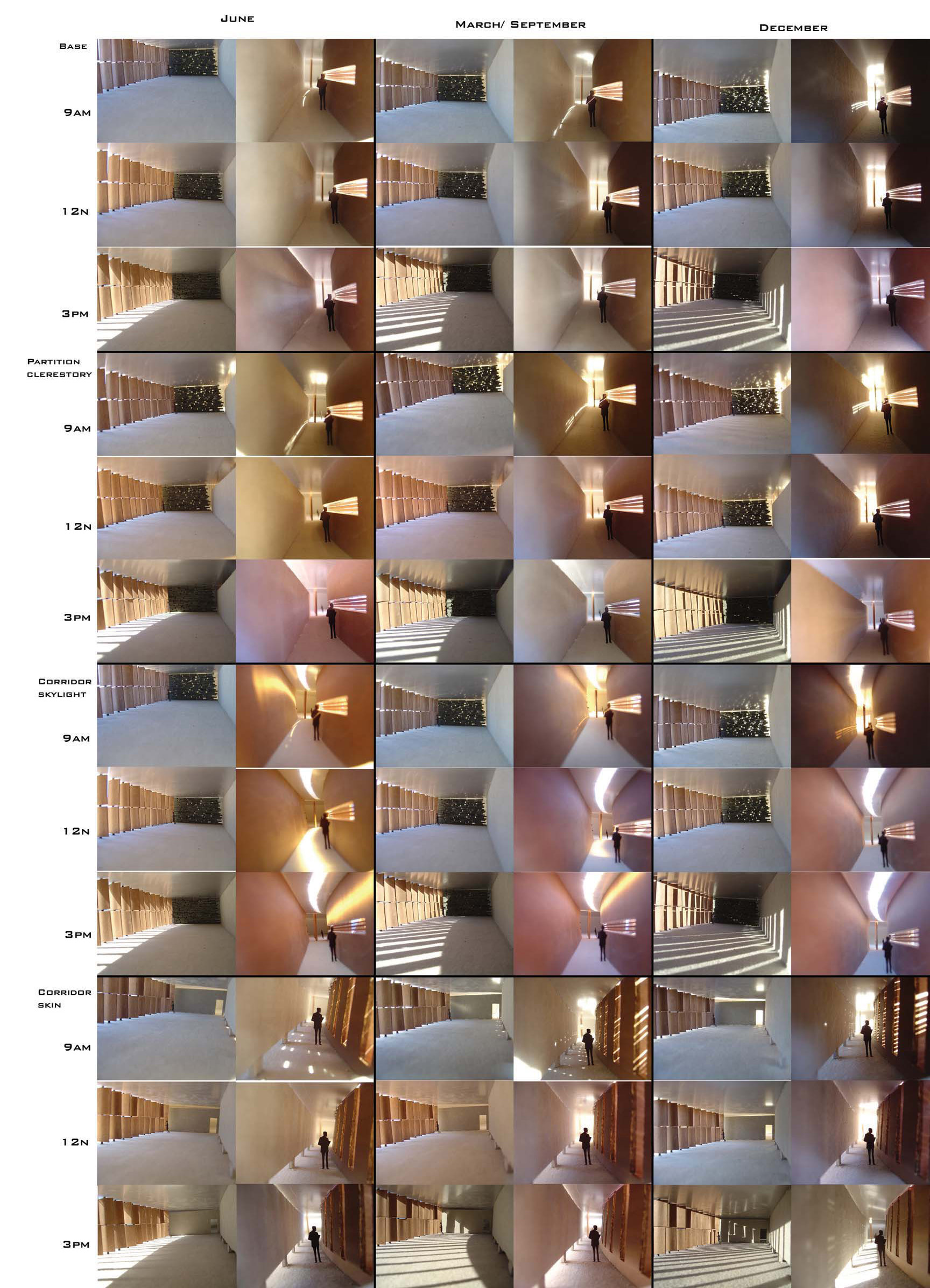Design Performance Objective |
Lightscapes II Analysis
Seasonal and diurnal daylighting studies using large scale phyisical models and Ecotect to evaluate qualitative and quantitative design considerations.
|
Students: Markowitz, Lucas, and Ogren
|
Software/Tools: |
|
|
Spring 2008 6.5 week TECHNOLOGY MODULE- Luminous and Thermal Design: An Ecological Approach to Zero-Energy Carbon Neutral Design
Lightscapes II: Experiencing Sustainability
• To explore the poetic and pragmatic implications and integration of daylighting and thermal design at the scale of the room.
• To explore a serial (or parametric) procedure of design development and testing.
|
Investigative Strategy |
In Project Five students worked at the scale of the room. They were asked to select a “typical room” or an “important room” within their project. They developed and tested both poetic + pragmatic design intentions through serial studies (parametric studies). These studies enabled them to gain a better sense of the experience of sustainability in their project while also exploring the qualitative and quantitative implications of their design investigations. This phase introduced an ecological design method that incrementally compared and tested design intentions and strategies. They were asked to bring the lessons from the room study into the overall design of their project.
|
Evaluation Process |
• Photo-documentation of the quality of space and sun penetration studies.
• Ecotect Quantitative Studies:
Daylight Studies: Illuminance studies on a diurnal and seasonal basis
Thermal Studies: Hourly temperatures and passive gains
|
|
Information about the Project and Studio |
• course outline
• project outline |
Evaluative Criteria |
• Clarity and execution of design intention demonstrated in the physical and Ecotect models
• 20%: Clarity and accuracy of parametric studies
• 20%: Clarity of intentions demonstrated in summaries, drawings, diagrams, and photographs |
Cautions/Possible Confusions |
Emphasis should be placed on the importance of integrating qualitative and quantitative daylighting and thermal design issues at varied scales (massing, section, details, materials). The project is intended to encourage experimentation and to gain qualitative and quantitative understanding of the intersections between daylighting and themal design. The project is not seeking a single answer or solution. |
Range of Applicability in terms of CLIMATE |
ALL |
Range of Applicability in terms of TYPE |
ALL |
Reference Material |
|
Duration of Exercise |
One week. |
Degree of Difficulty / Previous Knowledge Required |
Introductory graduate level. |
| |

Lightscapes II Analysis
Students: Markowitz, Lucas, and Ogren
Seasonal and diurnal daylighting studies using large scale phyisical models and Ecotect to evaluate qualitative and quantitative design considerations.
|

